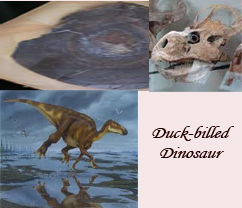
The Museum of Nature and Science, a paleontologist Anthony Fiorillo excavated Cretaceous Period fossils along Alaska's North Slope. Most of the skeleton belonged to Edmontosaurus, a duck-billed herbivore, but some others such as the horned dinosaur Pachyrhinosaurus were also found.
Fiorillo hypothesized that the microscopic structures of the dinosaurs' skeleton could prove how they lived in Polar Regions. He enlisted the aid of Allison Tumarkin-Deratzian, an assistant professor of earth and environmental science, who had both skill and the services to make and check thin layers of the dinosaurs' bone microstructure.
"The bone microstructure of these dinosaurs is really a record of how these animals were rising throughout their lives," said Tumarkin-Deratzian. "It is about alike to looking at tree rings."


